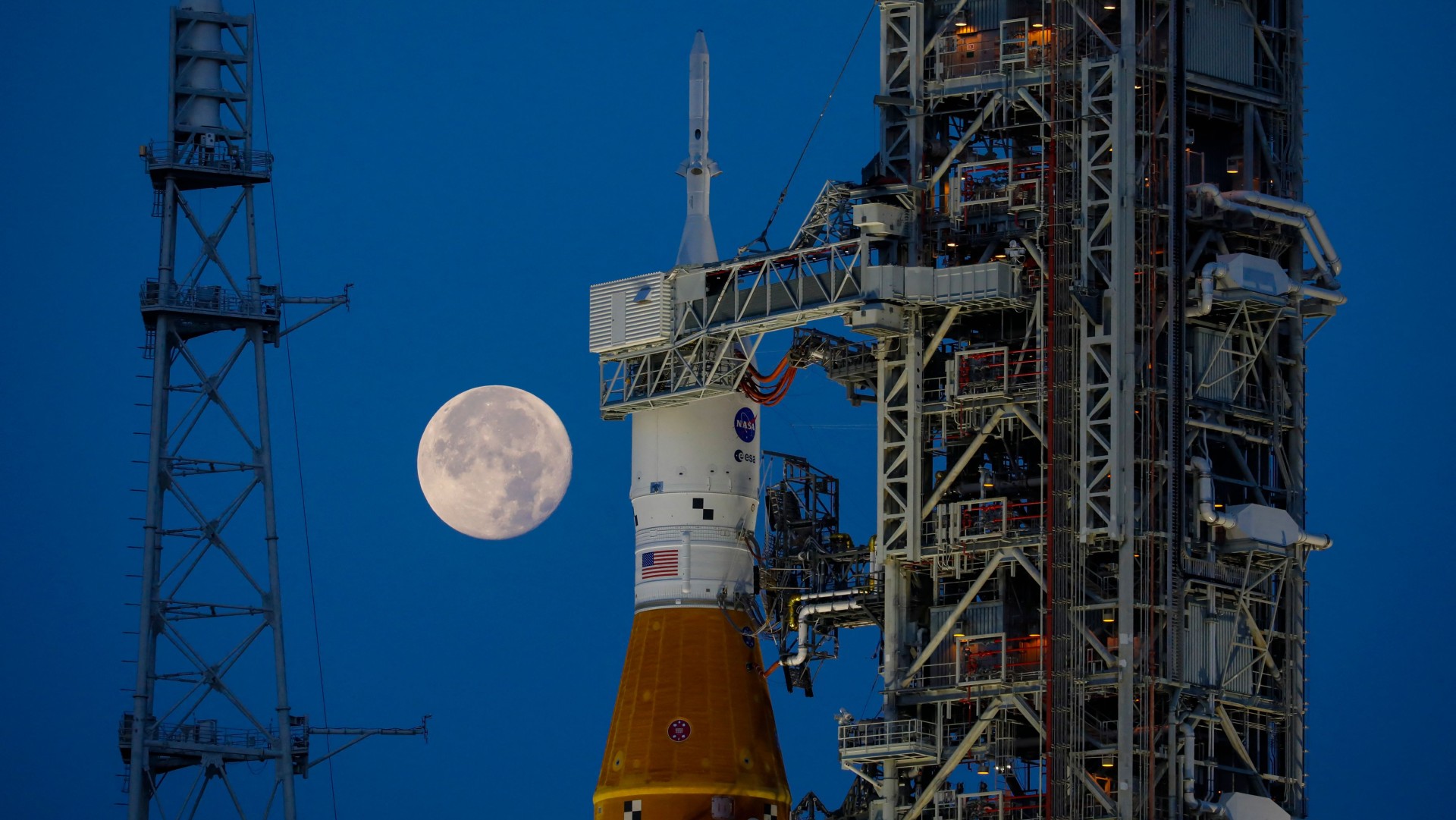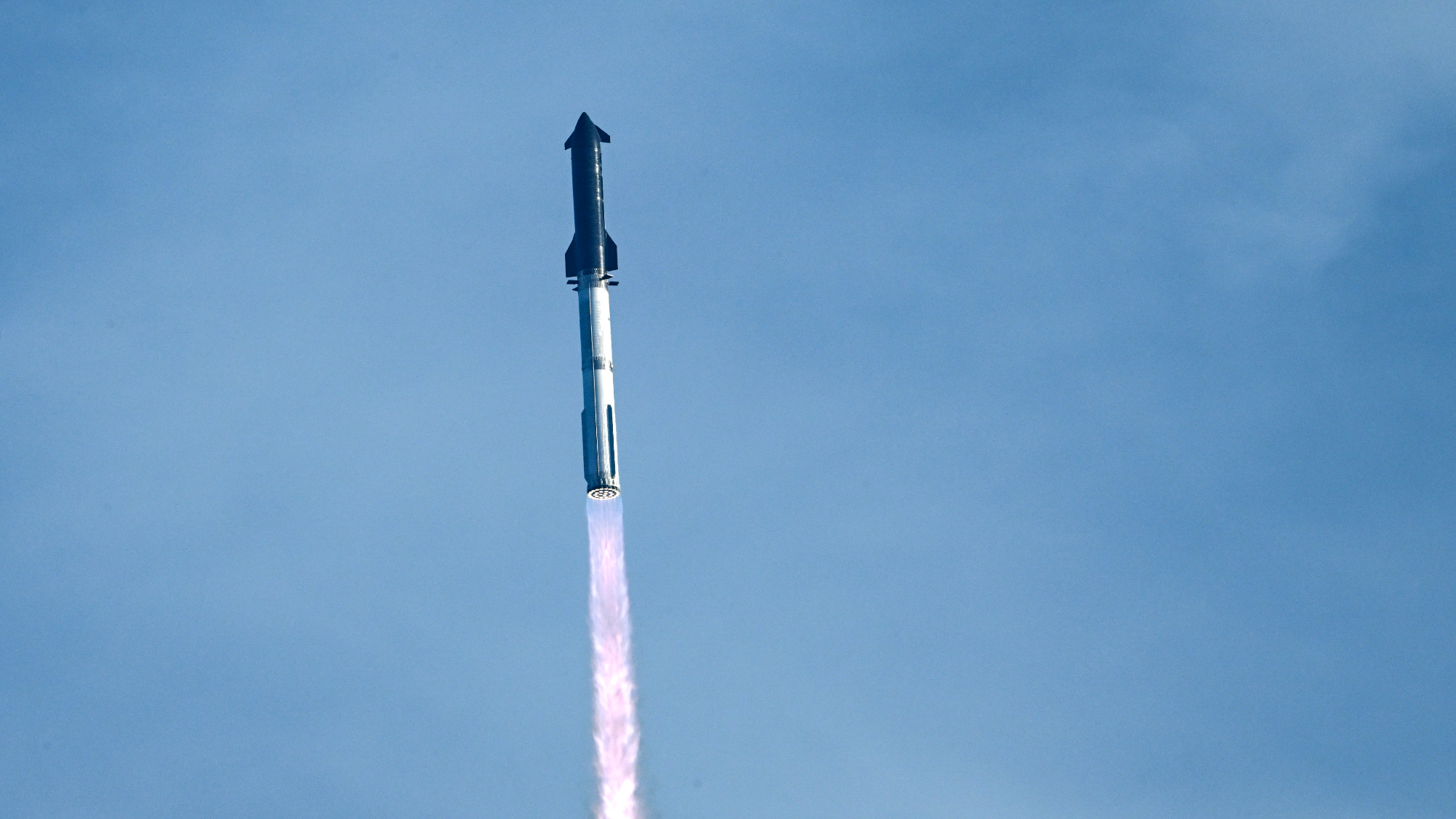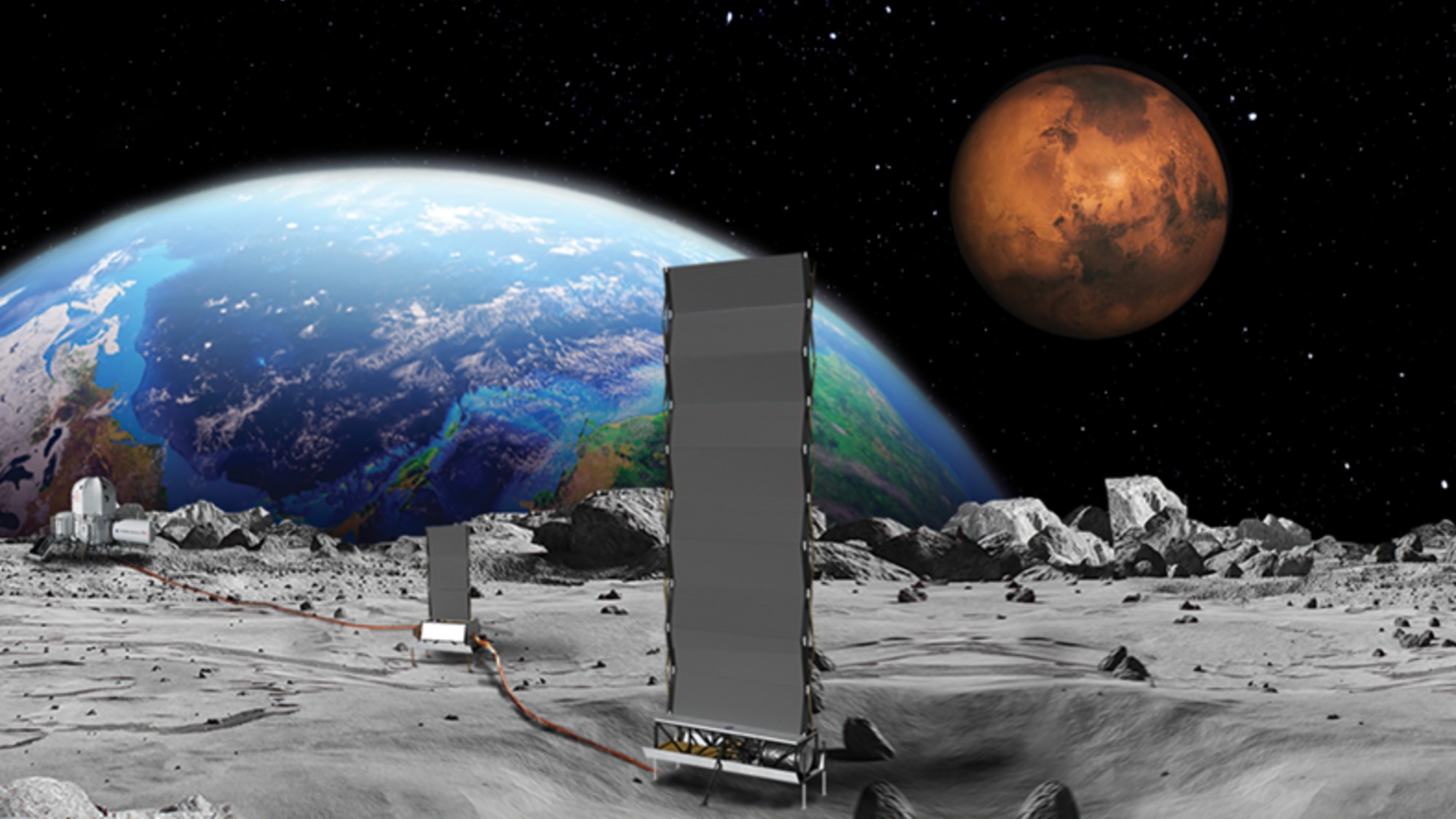Artemis 1: behind Nasa’s ‘Moon-to-Mars’ mission
US space agency forced to postpone launch that will eventually return humans to lunar surface

Nasa’s 50-year wait to send humans back to the Moon has been delayed after the US space agency was forced to call off the inaugural launch of the world’s most powerful rocket.
The first mission in the Artemis programme, which aims to get humans back on the Moon for the first time in more than half a century, was “scrubbed” at the last minute after “a fraught eight hours which saw weather delays, a suspected crack in the thermal casing, a hydrogen leak and, finally, a fatal engine cooling problem”, said The Telegraph.
“Just minutes after the lift-off window opened” on Monday morning, the decision was made to postpone the mission. Engineers are now working furiously to find a solution to the coolant issue, with hopes that the rescheduled launch can still go ahead this week.
The Week
Escape your echo chamber. Get the facts behind the news, plus analysis from multiple perspectives.

Sign up for The Week's Free Newsletters
From our morning news briefing to a weekly Good News Newsletter, get the best of The Week delivered directly to your inbox.
From our morning news briefing to a weekly Good News Newsletter, get the best of The Week delivered directly to your inbox.
What is the Artemis mission?
Named after the Greek goddess of the hunt, the Moon and chastity, the Artemis programme is Nasa’s attempt to return humans to the lunar surface – “but unlike Apollo, these missions are designed to keep us there”, said tech and science site Gizmodo.
To that end, Nasa and its international partners are planning to build a lunar space station called Gateway, to support activities both on and around the Moon. It is hoped this will eventually serve as a springboard to send humans to Mars.
Artemis 1 “represents a crucial turning point in NASA’s moon plans”, said CNBC. The 42-day mission involves the inaugural launch of the massive Space Launch System (SLS) mega-rocket, which will carry the unmanned Orion spacecraft beyond the Moon.
“The 98-metre Space Launch System is the most powerful rocket NASA has ever built,” said Sky News, “and in this crucial testing phase it will fly further than any spacecraft built for humans: 40,000 miles past the far side of the moon and 280,000 miles from Earth.”
A free daily email with the biggest news stories of the day – and the best features from TheWeek.com
According to Nasa, each of its two boosters generates more thrust than 14 four-engine commercial airliners combined.
“The purpose of Artemis 1 is to put vehicles and systems through their paces before putting astronauts aboard in 2024,” said The Times.
For Artemis 1, the Orion capsule, which can hold up to six astronauts, will carry just mannequins, including Commander Moonikin Campos, and a Snoopy soft toy to float around the cabin as a zero gravity indicator.
Provided this initial test flight is a success, Artemis 2 will carry four as-yet-unnamed astronauts on an eight-to-ten day mission that includes a fly-by of the Moon.
Artemis 3, planned for 2025, will finally land humans on the lunar surface, with Nasa saying the crew will include the first woman and person of colour. All 12 people to have landed on the Moon, between 1969 and 1972, have been white men from the US.
What is the timeline?
Nasa is not commenting publicly about the rescheduled Artemis 1 launch but it could be as soon as Friday or next Monday, weather permitting and provided engineers solve the engine cooling issue.
“Launch opportunities are limited by the stage of the moon and lighting conditions upon re-entry, among other considerations,” reported Space.com, so if Nasa misses this window then the next launch attempt is likely to be in October.
No firm timeline for the next stage of the project, which includes establishing a permanent base on the Moon followed by a manned mission to Mars, has been announced but it is not likely to get the go-ahead until the end of the decade or into the 2030s.
Is it worth it?
With the world in the midst of an energy and cost-of-living crisis, many are questioning the value of spending tens of billions of dollars on sending a handful of people into space.
It is estimated that US taxpayers will end up paying $93bn to fund the Artemis programme, with Florida Today arguing that the giant SLS “stands at risk of going down as one of the biggest boondoggles in spaceflight history if Nasa can’t find a way to control costs”.
The Observer said in an editorial: “It is a colossal investment and there are nagging doubts that it is justified at a time when private space companies, such as Jeff Bezos’s Blue Origin and Elon Musk’s SpaceX, are developing giant reusable rockets that could slash deep-space mission cost.”
Others have suggested it would be more cost-efficient to send robots into space in place of humans, seeing as they require no life-support system and do not need to be brought home.
Yet for all the talk of cost-benefits, there are other factors to consider.
The first is political. “Despite the delays, and absorbing much of Nasa’s relatively small budget by federal agency standards, the Artemis programme has enjoyed strong bipartisan political support,” said CNBC, in part because the SLS development has engaged many different partners around the US and the world.
A map on Nasa’s website shows contributing contractors in every US state and more than 20 partners across Europe. “Keeping those aerospace industry jobs going became a yearly focus for many in the US Congress hoping to boost their political standing with constituents and district aerospace companies,” said Space.com, helping to give SLS and the Artemis programme “staying power”.
Russia and China threat
There is also concern that Russia and China could step in to fill a lunar void left by the US. Last year the two authoritarian regimes announced a joint plan to build a research station on the Moon, raising serious security concerns among Western analysts.
Then there is the argument that lunar travel “transformed our understanding of our place in the universe”, said The Observer.
Not only did the Apollo missions 50 years ago inspire a new generation, but observations, experiences and images such as Bill Anders’ iconic 1968 “Earthrise” photo “underlined the fragility of the Earth and played a key role in the birth of the environment movement in the late 1960s”, said the paper.
“From that perspective,” it added, “lunar travel can be seen to have provided value for money and suggests there is still something to be gained from continuing to put men and women into space.”
-
 Blue Origin launches Mars probes in NASA debut
Blue Origin launches Mars probes in NASA debutSpeed Read The New Glenn rocket is carrying small twin spacecraft toward Mars as part of NASA’s Escapade mission
-
 The moon is rusting
The moon is rustingUnder the radar The Earth is likely to blame
-
 Panspermia: the theory that life was sent to Earth by aliens
Panspermia: the theory that life was sent to Earth by aliensUnder The Radar New findings have resurfaced an old, controversial idea
-
 NASA reveals ‘clearest sign of life’ on Mars yet
NASA reveals ‘clearest sign of life’ on Mars yetSpeed Read The evidence came in the form of a rock sample collected on the planet
-
 SpaceX breaks Starship losing streak in 10th test
SpaceX breaks Starship losing streak in 10th testspeed read The Starship rocket's test flight was largely successful, deploying eight dummy satellites during its hour in space
-
 NASA is moving away from tracking climate change
NASA is moving away from tracking climate changeThe Explainer Climate missions could be going dark
-
 Why does the US want to put nuclear reactors on the moon?
Why does the US want to put nuclear reactors on the moon?Today's Big Question The plans come as NASA is facing significant budget cuts
-
 Answers to how life on Earth began could be stuck on Mars
Answers to how life on Earth began could be stuck on MarsUnder the Radar Donald Trump plans to scrap Nasa's Mars Sample Return mission – stranding test tubes on the Red Planet and ceding potentially valuable information to China


